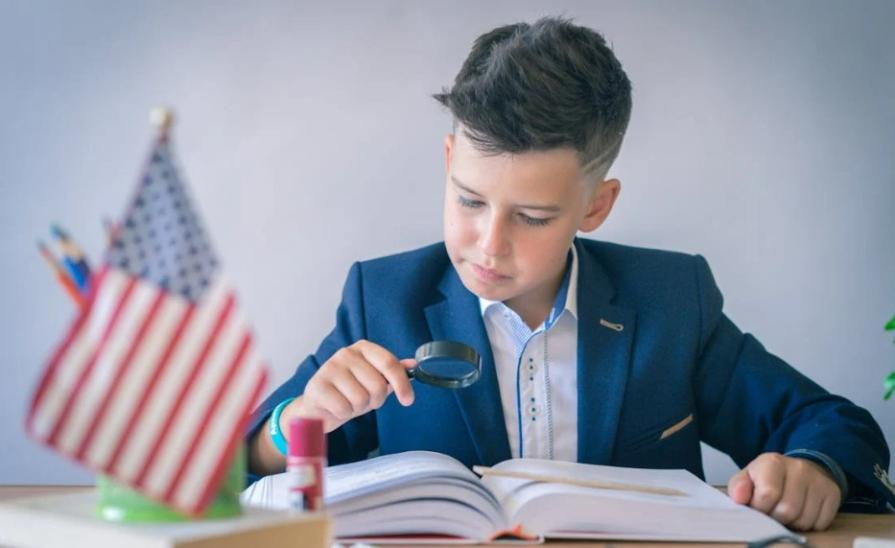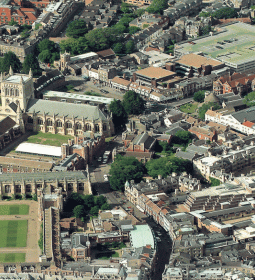The model of American school education is significantly different from what Europeans are used to dealing with, and the differences lie not only in the duration of study (Americans study during 12 years), but in teaching methods, the content of academic programs and many other aspects. In this article, we will tell you how an American high school is organized, about the main types of educational institutions, extracurricular activities, tuition fees and admission features, and some other important aspects.

Curricula and methodologies
In American schools, there is no single national standard of education, neither secondary nor higher. There is a National Curriculum Framework, but its structure, including subject content and start and end dates for classes and vacations, is determined at the state level. Specific aspects, such as the choice of textbooks and auxiliary materials, the volume and format of the presentation of the material, are determined by the educational institutions themselves, both public and private. Therefore, any school can independently establish a program for students in accordance with its own ideas. For example, some private schools, along with the national curriculum, offer special programs such as Montessori, Waldorf or family, international programs, for example, IB or British A-level.

What are the different types of schools?
American schools can be public and private.
- Public schools are established by municipalities and are funded by the government. 90% of Americans study in public schools. Foreign students can also study in public schools, but only as part of exchange programs or if they have a residence permit — in order to enroll in a public school, the child's parents must pay taxes to the US treasury, which is logical. For young Americans, studying in state-funded schools is free, for foreign students the situation is different - you will have to pay, although the cost is still significantly lower than in private schools.
- They charge money for studying in private schools , and a lot of it, but there is more of everything else here: more opportunities, modern textbooks and computers, better stadiums and laboratories, programs and teachers. In addition to it, the diploma of a non-governmental school is often quoted higher - in some universities, admissions committees are more willing to consider an applicant with fours from a private school than an excellent student who graduated from a state school.
Private schools are divided into several types. These can be mixed and separate schools (in the former, children of different genders study together, in the latter, boys are educated separately from girls), independent and religious (and not necessarily directly subordinate to one of the church communities - often all religiosity is reduced to morning prayer), boarding schools and day schools.
98% of schools teach in English, and the remaining 2% have a small number of French-language and Spanish-language schools. There are also schools with mixed teaching, where only part of the subjects is taught in a foreign language.
How does an American high school work?
American secondary education within the framework of the national curriculum includes three stages, and this division is not a convention: very often a child studies in two or three separate educational institutions, each with its own administration and program.

- The first is elementary school. It begins with the "zero" grade - K, kindergarten, where children aged 5-6 are taken. The program includes a number of compulsory disciplines that help the child form a basic system of knowledge about the world and acquire the skills necessary for further education - to learn to write, count and read. All basic subjects are taught by one teacher. An additional subjects include drawing and music (or other creative subjects), basic hygiene and science, sports, and sometimes one or two foreign languages. Education in Elementary ends at the age of 10-11 years (K5, fifth grade).
- At the age of 11-12, children enter middle school. It covers grades 6-8 (K6-K8) and is designed for teenagers aged 11-12 to 14-15 years. The compulsory curriculum includes English History, Geography and Literature, Language, Natural Sciences (Chemistry, Biology and Physics as an integrated course or separately), Computer Science, one or more Modern Languages and Sports. Moreover, each course can be chosen at two levels - basic and advanced. In addition to the curriculum, other courses may be offered, which usually concern culture, arts, music, and social studies. The range of available courses depends on the school, and the options can be quite exotic. Public and most private schools have transfer exams or a general final exam at the end of high school (each state independently determines the necessary procedures and regulations, so there are no universal recipes in this regard).
- The upper stage of secondary school is called High School: students study here for another four years, from 15 to 18-19 years old. High school students are given even more freedom in choosing subjects, they themselves determine the content of the program: at this age, a teenager most often already knows what he wants to become, and chooses those subjects that he will need at the entrance exams. There are also compulsory subjects: English, language arts and a separate course in critical thinking, disciplines from the exact and natural sciences block, physical education and history (usually American, but with a global component). The rest of the disciplines can be chosen at your discretion, and the choice is very wide: some schools offer 3-4 hundred programs to choose from. Moreover, there are 2 levels for both compulsory courses and electives – basic and advanced.
- Additionally, in high school, you can take AP courses — the university level. They have their own, special purpose. The fact is that in high school there is a system of academic credits, and for a certificate you need to score a certain number of them, and the higher the level of the chosen subjects, the more prestigious the certificate. AP is an opportunity to significantly increase the "prestige" of the certificate and the average GPA.
Electives and extracurricular activities
The American model of education is quite an ambitious thing. Even public schools set themselves the goal of teaching a well-rounded person with a high potential for civic activity, so extracurricular work with children plays a huge role here. Children generally spend a lot of time at school, and it's not just about "coaching" school subjects.
For example, great importance is given to sports. In primary and secondary school, in addition to standard physical education lessons, it can be gymnastics or athletics, and as teenagers get older, everyone chooses an interesting sport and does it at an advanced level, either personally or as part of a team. The sports infrastructure of even public schools, not to mention private ones, allows you to train almost at a professional level.
In addition to sports, schools offer dozens of hobby groups and clubs, from drawing, theater and sculpture to 3D modeling, robotics and the Model United Nations (hundreds of different forms of leisure activities are available in some schools), various formats of social work or homework preparation under the supervision of a teacher or a special academic consultant.
Grades and academic performance
Tests and exams are used to assess the level of knowledge. Children write their very first tests at the end of primary school, and you should not take them lightly - the results of the tests determine how good the next school where the child will study will be.

American schools use a letter grading system, although some states additionally use a percentage or numeric model. Letters from A to F are used, where F is an unsatisfactory mark, the letter can be supplemented with a "+" or "-" sign. The average grade point average (GPA) required to storm universities depends on school grades.
What will secondary education in the United States give?
Studying in an American high school gives a child several significant advantages, increasing his chances of successful employment and admission to university.
The curricula here are quite flexible, especially in high school, there is usually a special department where the student will not only be helped to form an individual curriculum by choosing the most interesting subjects, but will help to draw the effective program. Private schools offer an individual approach, so a graduate of an American school is statistically more successful than his peers from most countries of the world, knows better what he wants, speaks English well and is able to solve even quite complex problems at a professional level. Also the experience of intercultural and interreligious dialogue, gained in communication with peers from different countries of the world, provides experience of communication with a variety of people.
Finally, numerous clubs and hobby groups make learning not only useful, but also pleasant and interesting.
Visas to study at an American school
A student visa is required to study in the United States, and an I-20 form is needed for a visa. You will have to collect a package of documents and pass an interview with an employee of the American embassy or consulate. You cannot get a visa without an I-20: this form is filled out by the educational institution, it serves as confirmation that the child is admitted at an American educational institution. You need to be as careful as possible when filling out the document, and the amount indicated in the form must be in the bank account of the child's official representative - the one who will pay for the tuition.

For schoolchildren, two types of visas are suitable - M-1 and F-1. The difference between them is in the validity period: M-1 is issued for a period of one year, while F-1 is issued for the entire period of study. This visa is universal, suitable for studying both in schools (except for public schools, minus one-year exchange programs) and in US colleges.
Cost of tuition in schools in the USA
Studying in an American school is not cheap. For example, a year of study at a public school for foreign students will cost, depending on the state, 9,500-14,000 USD, private schools will take more. So, in day schools, the minimum price tag starts from $25,000, and in boarding houses with accommodation, the annual tuition fee can reach $80,000-120,000, without including additional costs.
On the other hand, Americans take diversity very seriously and try to provide private school opportunities for those who, all other things being equal, cannot afford independent education. Therefore, the school will almost certainly have a variety of scholarships - both those granted for merit or distinction, and those based on the criteria of need. As a rule, the size of such a scholarship is not very large - 15-20%, but in some schools, the aid can cover up to 80 or even 100% of the tuition fee, as well as additional costs (to be fair, it should be noted that this is a very rare practice).














